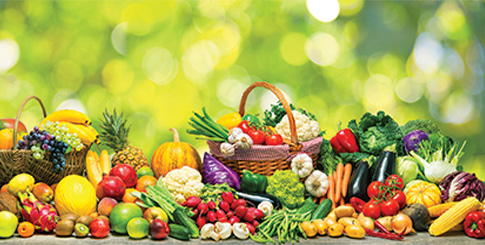“We’re most excited about what’s happening a half mile away,” shares Hopkins. “At the Maryland Market Center, which used to be a seafood market, we plan to erect a wall to separate the seafood and the nonseafood side, and give the vacant units a modern, fresh look. We already have two produce tenants signed on.” When all the vacant units are filled, the building will be expanded by 130,000 square feet.
“Another exciting project in the works is an anaerobic digester being built on land we own, so we can take our waste to a place just five miles from us,” enthuses Hopkins. “Landfill is one of our biggest costs, so with this digester tenants will pay less and we’ll get energy out of it.
The Retail View
Like most everywhere else, there are grocery wars in Maryland with retailers all fighting for their share of the market. “I think the influx of grocery stores here has to do with the highly populated area,” contributes MDA’s Slade. “Even though we’re a small state, we have a large population with a high median income.”
A spate of recent supermarket activity and announcements included the debut of Sprouts Farmers Market in recently flood-ravaged Ellicott City, while German chain Lidl set its sights on a new $100 million headquarters and distribution center in Cecil County.
Not to be outdone, Weis Markets tripled its Baltimore locations, Seasons opened a kosher supermarket in Pikes-ville, and Food Lion decided to remodel stores, slash prices, and hire more associates for its stores in nearby Virginia.
This last bit of news is music to the ears of Mike Royster, in sales for Loving’s Produce Company, also in Richmond. Royster cites the Richmond area’s competition, which is ramped up by “Baltimore companies coming down here to sell, even though its two-and-a-half hours away. In Richmond alone, there are 10 to 15 different produce companies.”
Loving’s offers a full line of fruits, vegetables, and herbs, with as much as possible coming from local farms. Royster says the most popular crops mirror Maryland’s, with tomatoes, apples, watermelon, cantaloupe, potatoes, and lettuce.
Royster says fresh-cut cycles in and out of vogue. When the economy was booming, everyone bought precut produce, but when the market went south, customers returned to buying whole fruits and vegetables. Loving’s does sell a salad mix to schools and Royster says a few customers are willing to pay more for organics, but mostly it’s bulk or conventional products.



